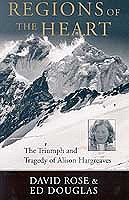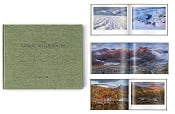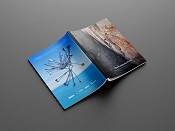

This review originally appeared in The Independent newspaper in August 1999.
In 1993 Alison Hargreaves was descending alone from a summit in the European Alps - one of six significant solo ascents she did there that summer - when she passed an abandoned blue anorak in the snow. A short distance below she came upon a headtorch, a wallet full of Spanish pesetas, a climbing harness. Odd things to have left, she thought; until she turned a corner on the descent and saw a red rucksack, and attached to it the owner of those random items. They had spilled from his sack after he had fallen higher up.
"There was no need to check if he was still alive," she wrote in her diary later. "I knew instantly that he was dead..." She would not look into the corpse's eyes, scared that they would haunt her. Instead she sat on the slushy snow and wept, while a helicopter came to recover her and the body. Two years later, in August 1995, a team of Spanish climbers near the upper reaches of the "savage mountain" - K2, the second-highest in the world - came upon an empty climbing boot with a battery-powered heating device. Ten feet below were an anorak and climbing harness that they recognised, like the boot, as belonging to Hargreaves. Blood tracks pointed down to a body, unreachable. Aged 33, she was dead.
I'll admit I shed a tear as I read this account of Hargreaves's death, plucked from the mountainside and hurled against its flanks by hurricane-force winds as she descended from K2's summit. I'll admit too that I didn't do so when I originally heard of her death in 1995. The difference? This book.
In May 1995 Hargreaves climbed Everest without oxygen or others' help - a stunning achievement for which she was rightly lauded. Then after her death she was excoriated by media commentators for "foolhardiness", "self-indulgence" and "abandoning her two young children". I thought she died doing what so many climbers and mountaineers do, indulging her passion and putting off her home life.
| "She often pondered escape from her marriage, but found it easier to deal firmly with grim rock and inhospitable weather than similar moods in her spouse..." |
The truth that emerges is quite the reverse. Hargreaves was desperate to summit because she saw it as the only way to achieve financial independence, break free of her failed marriage and win custody of Tom, then six, and Kate, four. The tragedy is that without that incentive, she might have turned back and lived. Mountaineers often say that no summit is worth dying for, but Hargreaves was climbing more than a mountain that day. The authors have painstakingly reconstructed the private person from years of diaries and the comparatively few interviews she gave. Her widower, Jim Ballard, clearly did not cooperate. He is a looming, ugly presence throughout, his motives never clear.
Hargreaves in public wore a shell, only revealing to her closest friends her unhappiness with her lack of recognition (particularly compared to Catherine Destivelle, a talented French climber and mountaineer) and her marriage, which at times was mentally and physically abusive.
She started going out with Ballard, 16 years her senior, while still at school, then married him rather than going to university as her parents had wished. He had the financial security (through a climbing shop and factory) that let her indulge her love of climbing.
But when the hurricane of the recession blew through Britain in the early 1990s, they lost everything, including their home. She soloed those six Alpine summits in 1993 for fame and hence sponsorship, while the family lived in campsites. Ballard was her most enthusiastic supporter, insisting she was a genius.
| "Climbers almost never call each other "brave", because it implies self-sacrifice and usefulness; climbing rarely involves either..." |
Certainly she was a smart, strong climber. She often pondered escape from the marriage, but found it easier to deal firmly with grim rock and inhospitable weather than similar moods in her spouse.
Climbers almost never call each other "brave", because it implies self-sacrifice and usefulness; climbing rarely involves either. They will say "bold", which emphasises the personal and the awareness of risk. Yet on that fateful day on K2, one might say that Hargreaves was being brave.
The mountain killed her, though, and she lies there still. The question that nags at me is whether, four years on, the myths around her death can be rewritten. Is anyone listening?
When a group of overconfident climbers died in a storm on Everest in 1996, Jon Krakauer's first-hand account Into Thin Air was in print within months. Some have argued that it distorted some events; but "truth" often belongs to those who tell their side first. Hargreaves never told her side of her unhappy marriage and what it drove her to do. "Better to live one day as a tiger than a thousand years as a sheep," Ballard said at the news of her death. Thinking like that gets you killed on mountains. In truth, it is better to live. But a lioness will die defending its young. So, it seems, did Hargreaves.
© Independent Newspapers 1999
We ran a competition quiz to win a copy of Regions of the Heart - read about the competition results
Read the interview with author Ed Douglas










Comments